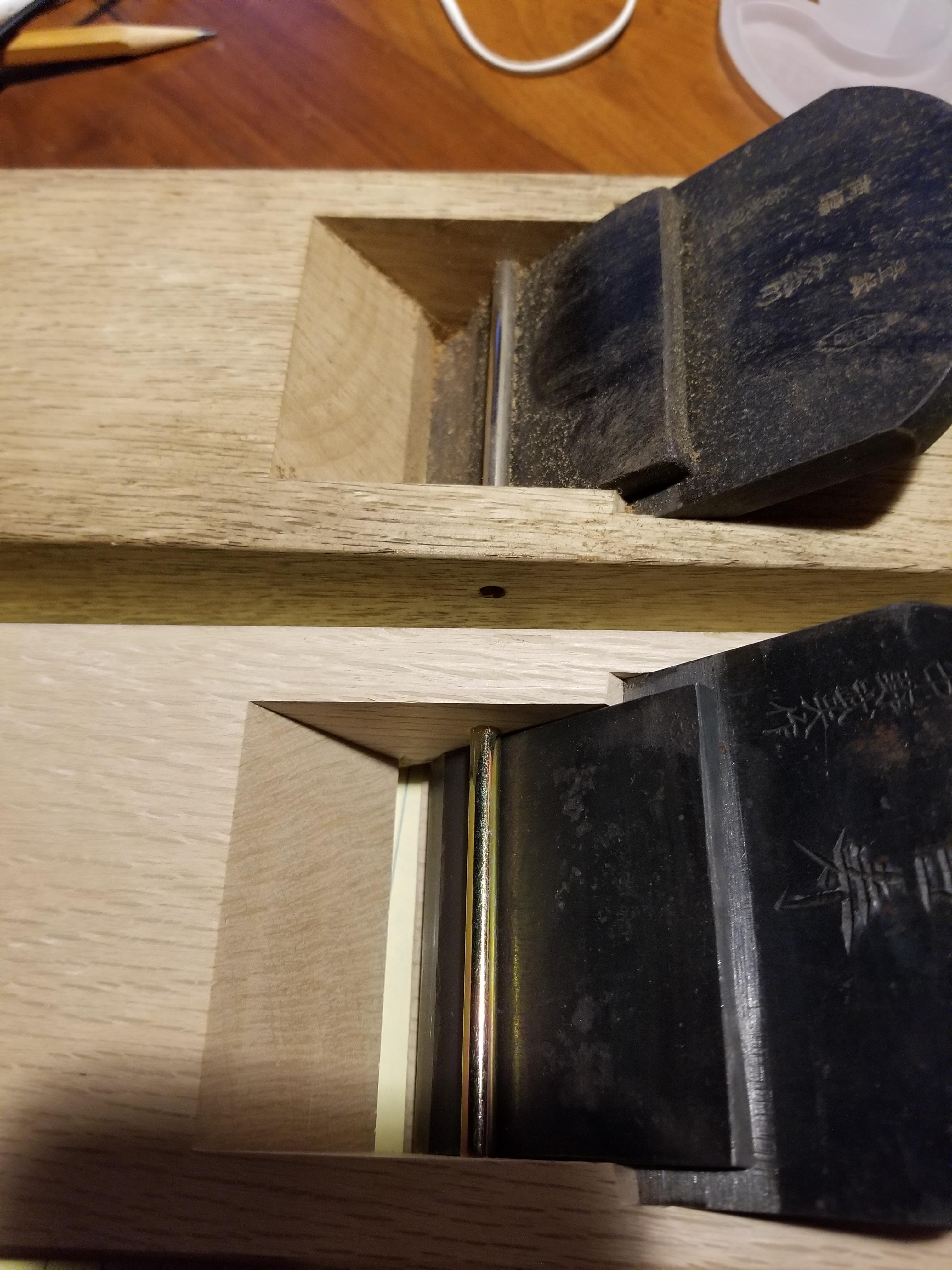Familiarity with the process will breed a less tight setting rather than more. When I wrote the original article, I tried to suggest that people never:
* try to measure the setting (check the shaving at the heaviest you'll use with a given set)
* create a jig that sets something at a certain setting
I've not seen a bunched up shaving in several years. 5? I don't know. I may have intentionally bunched one up in a video. Bunched up shavings lead to scarred surfaces.
98% of the time (or more) I use a setting that looks right to my eye for general work. Putting numbers to the setting is something that creates the idea that this is more precise than it is - it's by eye, or that you will have to take a plane apart and set the cap iron at different places (it is extremely uncommon for me to reset a plane without it being due to sharpening).
19 times out of 20 (guessing), if wood is difficult, it'll just be a little bit more hairy after the straight shaving set and you may need to make a couple of extra passes with a thin shaving to get a final surface. Setting the cap super close (like a couple of - 2 - thousandths) generally isn't helpful, chances mashing shavings under the cap iron, and is a faff.
The objective of the cap set is to hold a thicker shaving down. The objective of the follow up shavings is to plane wood thin enough that it can't lift in the first place. Keeping the cap set rather than using a single iron plane at that point is a good idea only because it prevents accidentally taking a thin shaving and spoiling a surface.
* try to measure the setting (check the shaving at the heaviest you'll use with a given set)
* create a jig that sets something at a certain setting
I've not seen a bunched up shaving in several years. 5? I don't know. I may have intentionally bunched one up in a video. Bunched up shavings lead to scarred surfaces.
98% of the time (or more) I use a setting that looks right to my eye for general work. Putting numbers to the setting is something that creates the idea that this is more precise than it is - it's by eye, or that you will have to take a plane apart and set the cap iron at different places (it is extremely uncommon for me to reset a plane without it being due to sharpening).
19 times out of 20 (guessing), if wood is difficult, it'll just be a little bit more hairy after the straight shaving set and you may need to make a couple of extra passes with a thin shaving to get a final surface. Setting the cap super close (like a couple of - 2 - thousandths) generally isn't helpful, chances mashing shavings under the cap iron, and is a faff.
The objective of the cap set is to hold a thicker shaving down. The objective of the follow up shavings is to plane wood thin enough that it can't lift in the first place. Keeping the cap set rather than using a single iron plane at that point is a good idea only because it prevents accidentally taking a thin shaving and spoiling a surface.

































